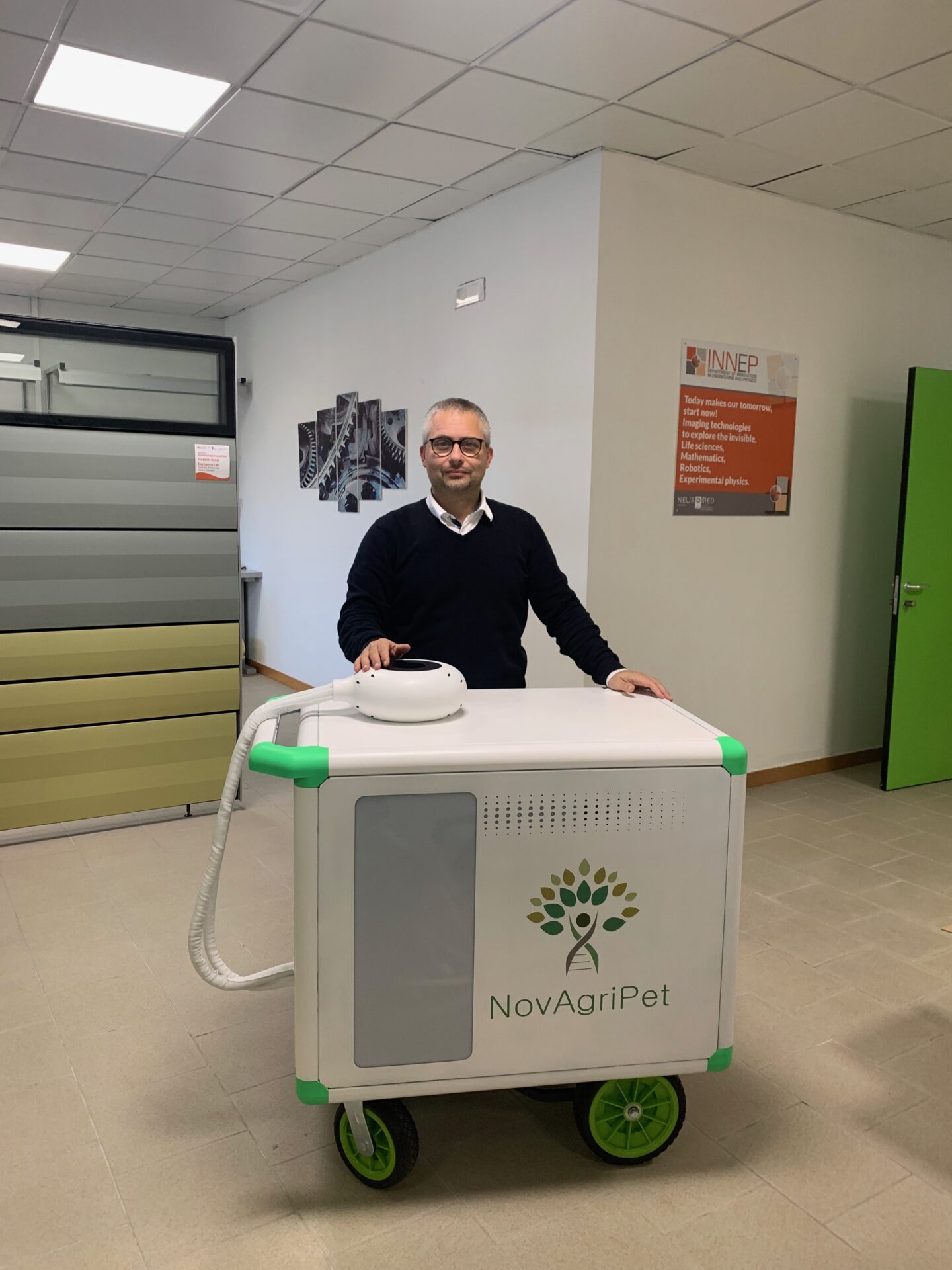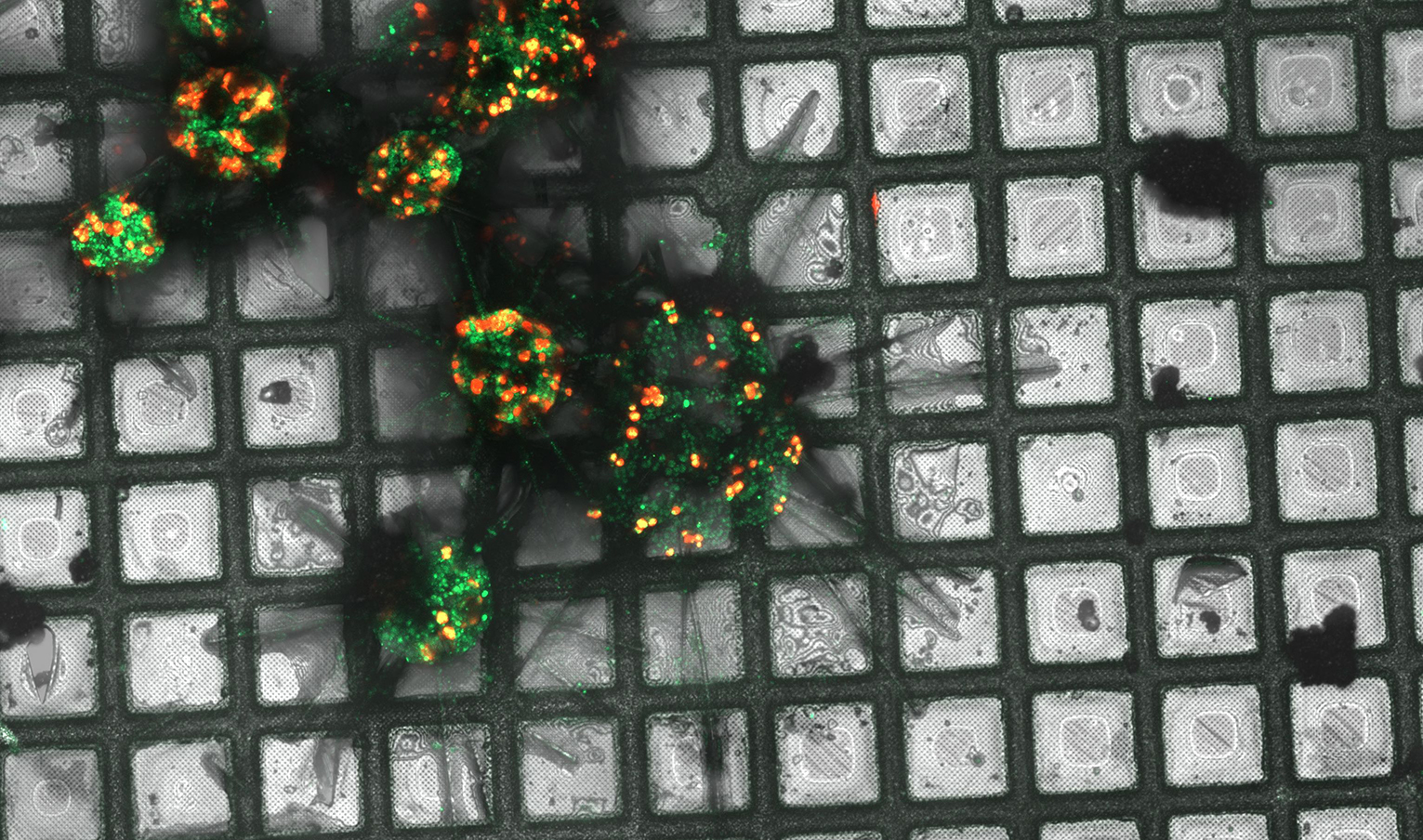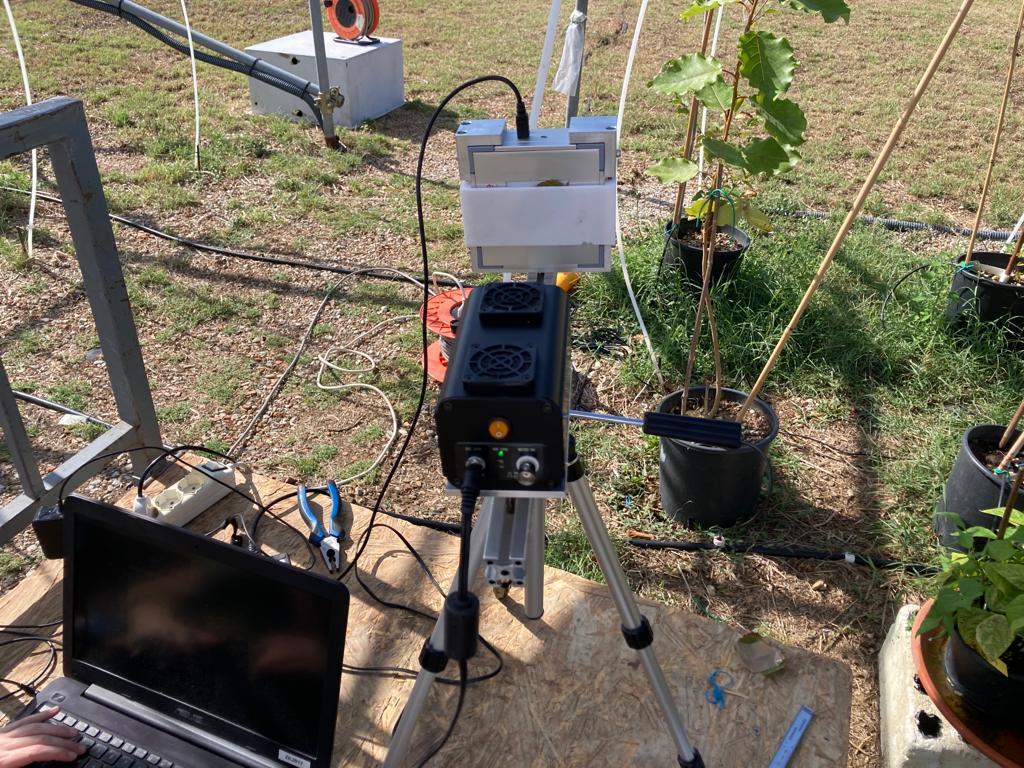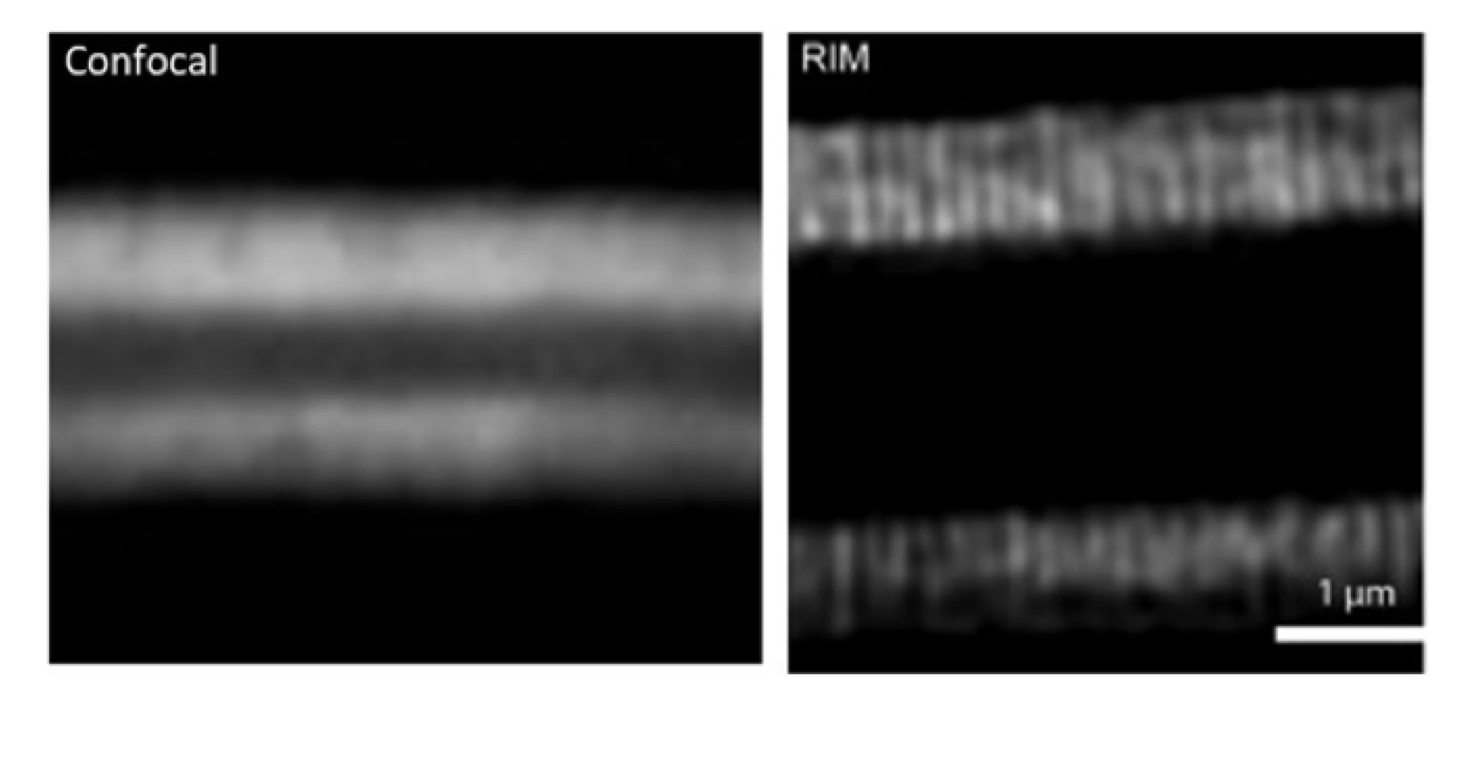
New technologies
Innovation in imaging technologies in life sciences is continuous, fast and exciting. To remain at the technological forefront, Euro-BioImaging has established a workflow to ensure that new technologies are continuously integrated into our portfolio. The expert imaging facility staff at the Euro-BioImaging Nodes are developing many new imaging methods and are making the latest developments available in open access.
On the right, Prof. Nicola D'Ascenzo, from our NEUROMED DIMP Node, proudly shows off the portable PET machine he is developing to study plant growth in the field.

Suggest a new imaging technology
Whether you are a technology developer, provider, or Euro-BioImaging user, use this simple form to inform us of a new imaging technology. The technology may be either completely new, or new to Euro-BioImaging.
After you have made a suggestion for a new technology, the workflow for its inclusion into the Euro-BioImaging portfolio is:
- The technology is Showcased by a person or group to demonstrate the user need, its relevance to the scientific community and user access feasibility. (Not all suggestions lead to Showcasing.)
- After successful showcasing, a Proof-of-Concept study is arranged to confirm that the new technology can be offered as an open access service via Euro-BioImaging.
- After a successful Proof-of-Concept, the technology is accepted into the Euro-BioImaging portfolio and becomes available to everyone.
To Euro-BioImaging Nodes: If you wish to add more technologies from the Euro-BioImaging portfolio to your Node, use this simple form.
See below for more information and current technologies in Showcasing and Proof-of-Concept studies.
Showcasing new imaging technologies
Any technology developer/provider/imaging facility at a public research institution/university which is offering a new technology to external users can perform a Showcasing - it is not limited to Euro-BioImaging Nodes. In fact, Showcasing can also be a stepping-stone for becoming a Euro-BioImaging Node. Euro-BioImaging does not coordinate Showcasing, but facilities are invited to inform us of ongoing Showcasing. Afterwards, a simple report needs to be sent to us, if the new technology is to proceed towards becoming a Euro-BioImaging technology.
- If you are about to start Showcasing, please tell us about it, so we can advertise your Showcasing.
- If you are a user and interested in a technology being Showcased, tell us about it. This will help us in making it a Euro-BioImaging technology.
- If you have completed Showcasing, please send us a simple report.
Currently ongoing/completed Showcases
- Soft X-ray Tomography (showcasing successfully concluded March 2023)
- EPR imaging
- Laser Speckle Contrast Imaging
(Please see below for a list of technologies that have already moved from Showcasing to Proof-of-Concept studies.)
Proof-of-Concept studies
A new technology with user need and a functional access model demonstrated by the Showcasing process is included in the next available round of Proof-of-Concept studies (PCS). At this point, access to the technology is possible via Technologies on our Web Portal, just like for any other technology. Technologies undergoing Proof-of-Concept studies are marked with a star (*) in the technology listing and the Proof-of-Concept study has a defined time frame, after which the user demand and user and provider experience is reviewed by our Scientific Advisory Board to evaluate the Proof-of-Concept study. If the Proof-of-Concept studies are successful, the technology is then included into the Euro-BioImaging portfolio permanently.
- Visit our Proof-of-Concept page to learn more about the new technologies Euro-BioImaging offers.
- If you are a Node wishing to offer a technology for a proof-of-concept study, please let us know by sending an email to info@eurobioimaging.eu.
A summary of our official procedure for including new technologies in the Euro-BioImaging portfolio can be found here.
Technology highlights








